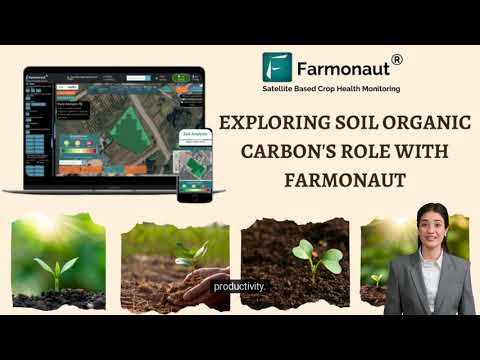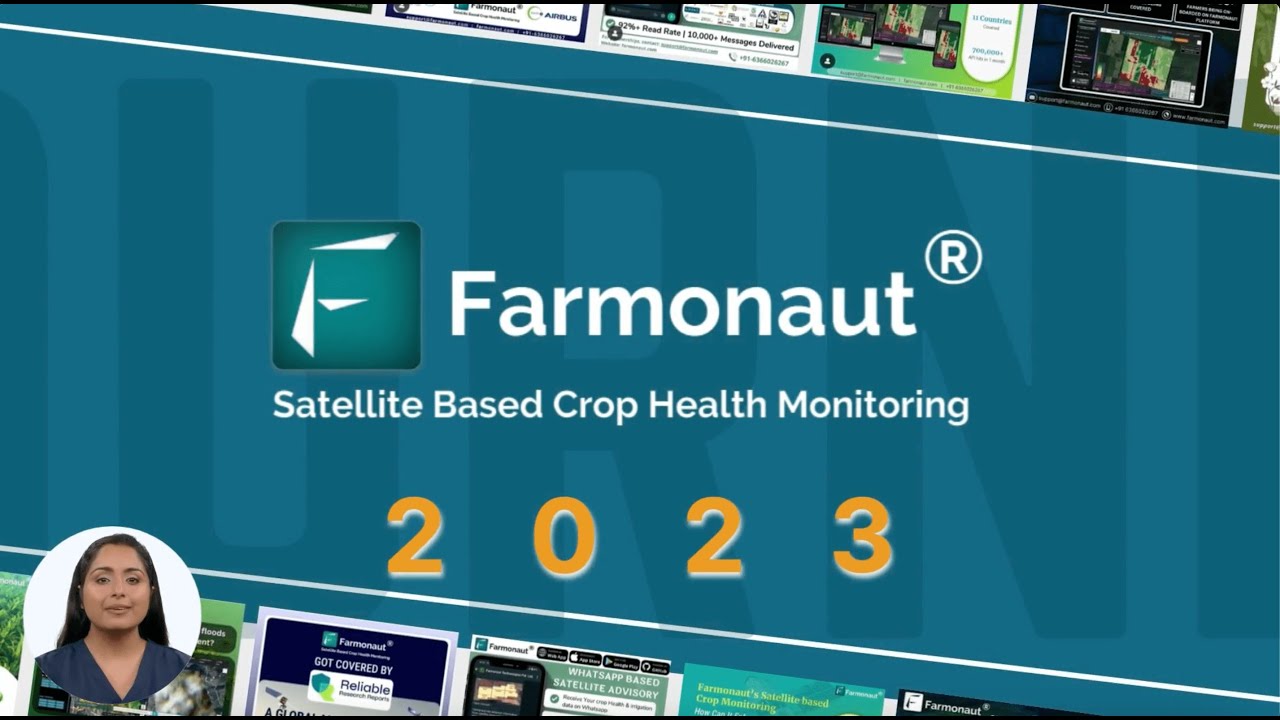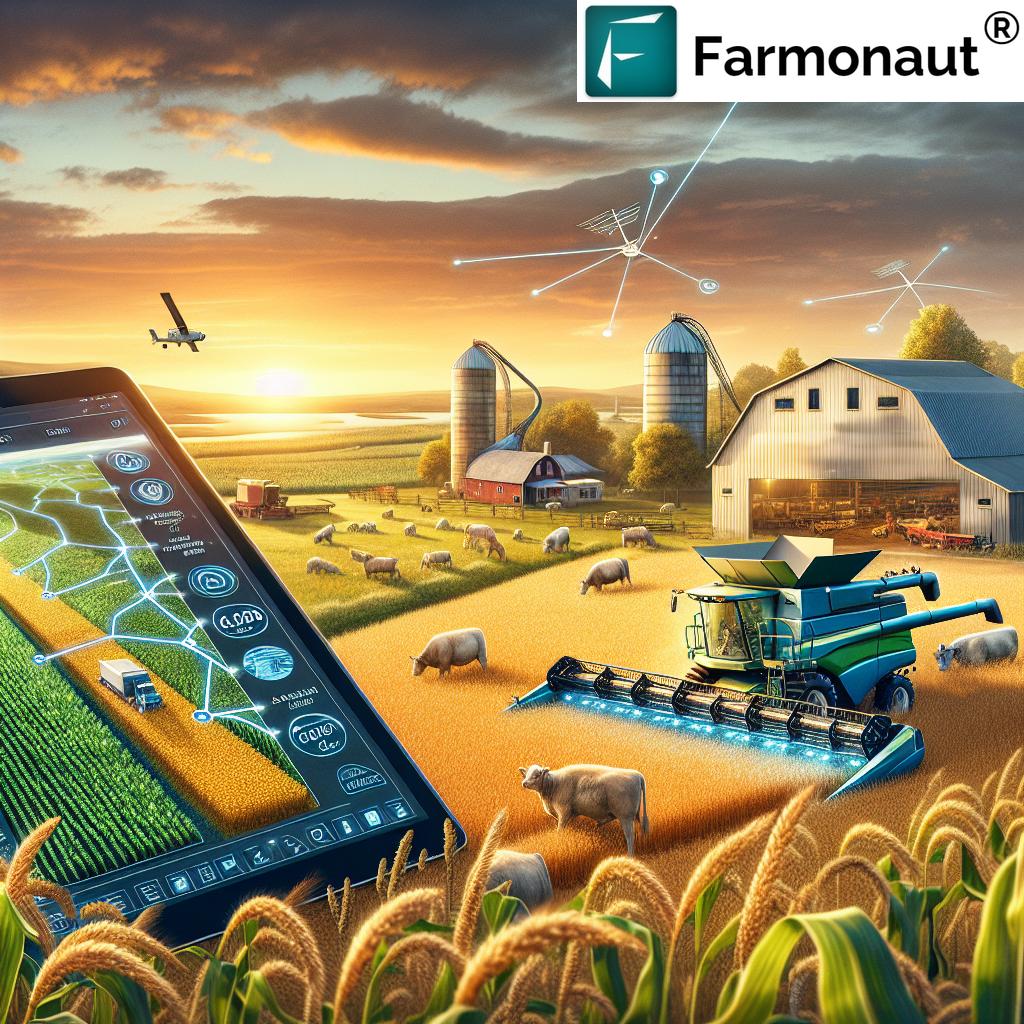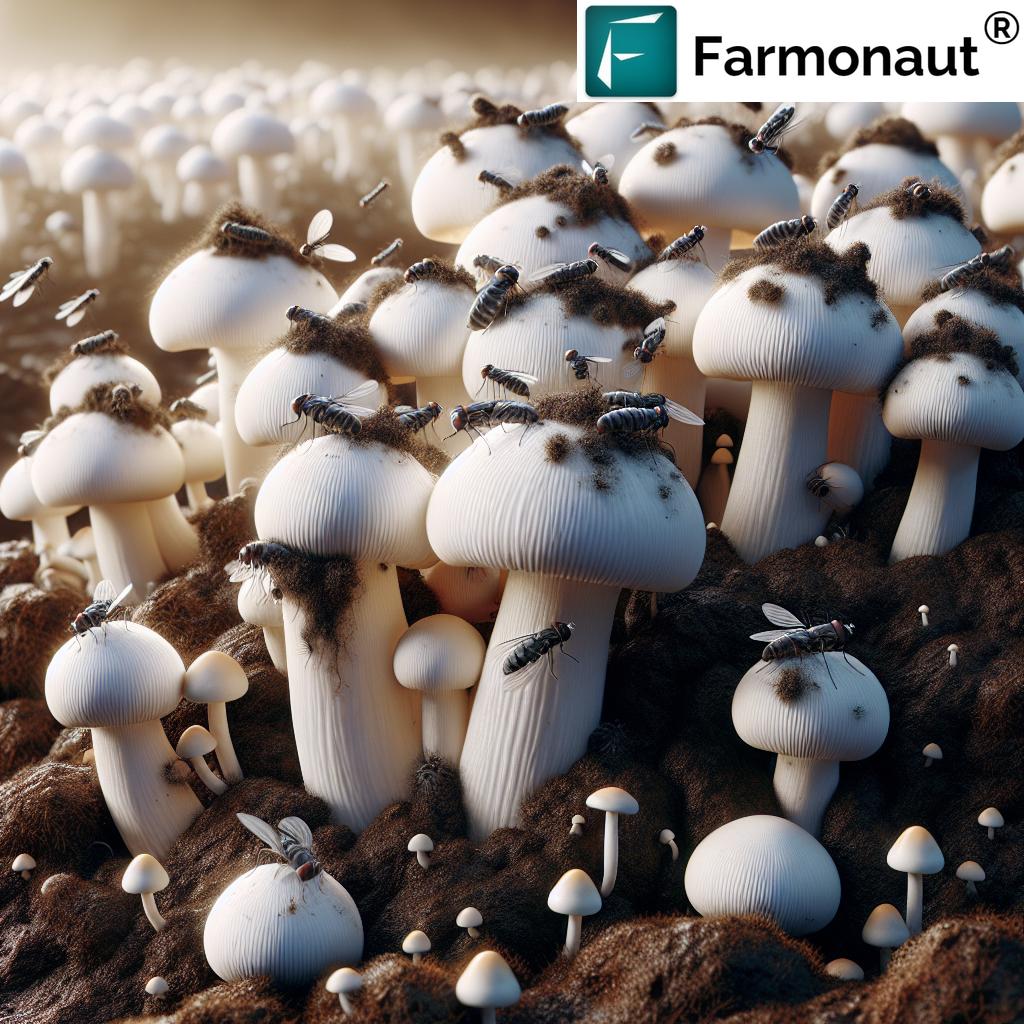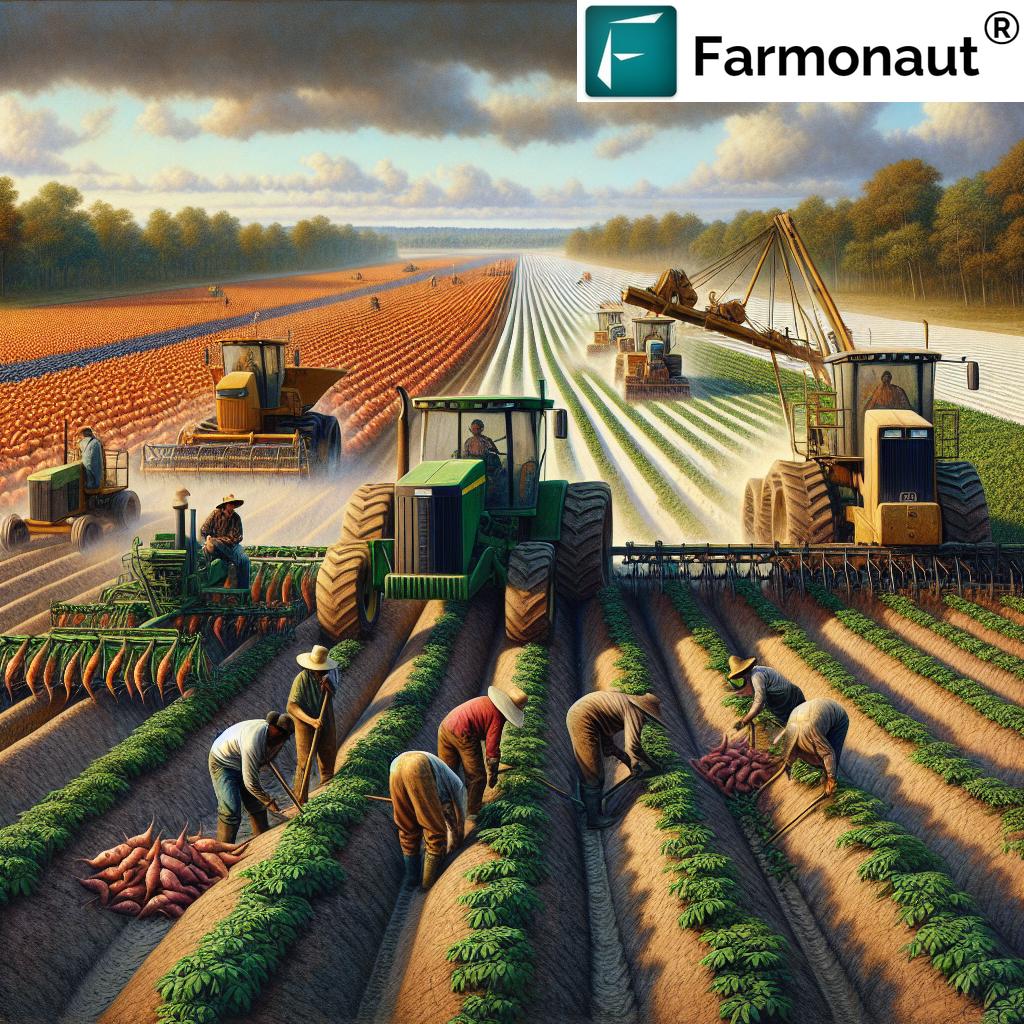Sustainable Farming in Ohio: How Native Flower Farms Boost Pollinator Populations and Soil Health
“A 20-acre native flower farm can transform into a thriving ecosystem, supporting diverse pollinator populations and improving soil health.”
Welcome to our exploration of sustainable farming practices in Ohio, where native flower farms are revolutionizing agriculture and promoting biodiversity. In this comprehensive blog post, we’ll delve into the world of pollinator-friendly agriculture and discover how organic farming methods are creating havens for bees, butterflies, and other crucial pollinators. Join us as we uncover the secrets of soil regeneration techniques and eco-friendly flower farming that are transforming the landscape of sustainable agriculture.
The Rise of Native Flower Farms in Ohio
In recent years, we’ve witnessed a remarkable shift in farming practices across Ohio. More and more farmers are turning to sustainable methods, with native flower farms leading the charge in promoting biodiversity and environmental stewardship. These farms are not just beautiful; they’re powerful tools in the fight against pollinator decline and soil degradation.
One such inspiring example is The Flowering Farm in Millfield, Ohio. Established by Margaret Hoff, this 20-acre haven showcases the potential of native flower farms to create thriving ecosystems. Let’s explore how farms like these are making a significant impact on local environments and sustainable food production.
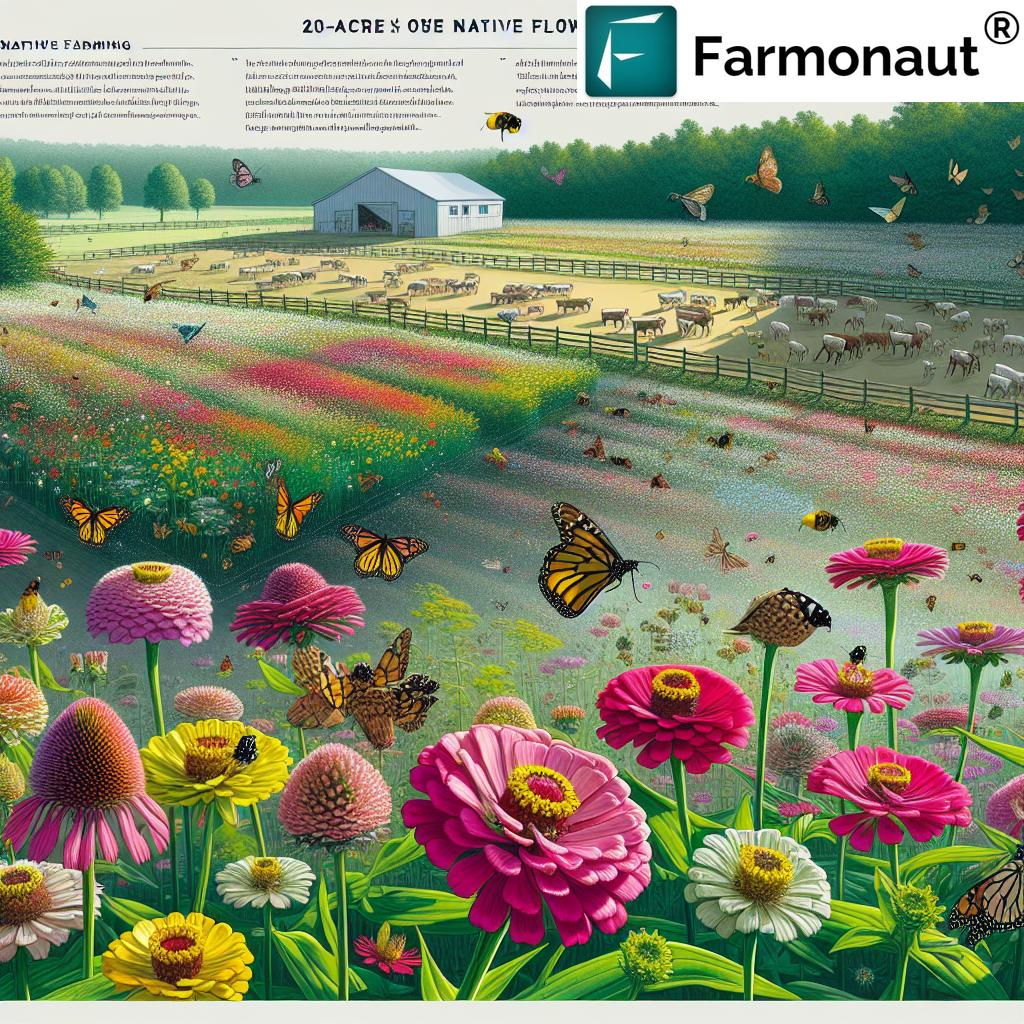
The Power of Native Plants in Sustainable Agriculture
Native plants are the cornerstone of sustainable farming practices. These species have evolved alongside local pollinators, creating mutually beneficial relationships that support entire ecosystems. By incorporating native flowers into their farms, Ohio’s agriculturists are tapping into a wealth of benefits:
- Increased pollinator populations
- Improved soil health and structure
- Enhanced natural pest control
- Reduced need for chemical inputs
- Greater resilience to local climate conditions
Let’s take a closer look at some of the native flower species that are making a difference in Ohio’s sustainable farms:
| Native Flower Species Name | Bloom Period | Drought Resistance Rating | Pollinator Attraction | Soil Health Benefits | Estimated Water Requirements |
|---|---|---|---|---|---|
| Purple Coneflower (Echinacea purpurea) | Summer to Fall | High | Bees, Butterflies, Birds | Deep Root System, Erosion Control | Low: 1 inch/week |
| Ohio Spiderwort (Tradescantia ohiensis) | Late Spring to Early Summer | Medium | Bees, Butterflies | Soil Stabilization | Medium: 1-2 inches/week |
| Wild Bergamot (Monarda fistulosa) | Summer | High | Bees, Butterflies, Hummingbirds | Nitrogen Fixing | Low: 1 inch/week |
| Black-Eyed Susan (Rudbeckia hirta) | Summer to Fall | Medium | Bees, Butterflies, Birds | Erosion Control | Low: 1 inch/week |
| Common Milkweed (Asclepias syriaca) | Summer | High | Butterflies (esp. Monarchs), Bees | Deep Root System, Soil Aeration | Low: 1 inch/week |
| New England Aster (Symphyotrichum novae-angliae) | Late Summer to Fall | Medium | Bees, Butterflies | Soil Stabilization | Medium: 1-2 inches/week |
| Butterfly Weed (Asclepias tuberosa) | Summer | High | Butterflies, Bees | Taproot System, Drought Tolerance | Low: 1 inch/week |
| Wild Lupine (Lupinus perennis) | Spring to Early Summer | Medium | Bees, Butterflies | Nitrogen Fixing | Medium: 1-2 inches/week |
By incorporating these native species into their farms, Ohio’s sustainable agriculturists are creating diverse and resilient ecosystems that support both wildlife and crop production.
Organic Farming Methods: The Foundation of Sustainable Agriculture
At the heart of sustainable farming practices are organic methods that prioritize soil health and natural pest management. Farms like The Flowering Farm in Ohio are leading the way by implementing techniques that work in harmony with nature:
- No Pesticides: By avoiding chemical pesticides, these farms protect beneficial insects and promote natural pest control.
- Soil Regeneration: Techniques such as cover cropping and composting help build healthy, nutrient-rich soil.
- Natural Habitats: Allowing areas of the farm to grow wild creates essential habitats for pollinators and other wildlife.
- Crop Rotation: This practice helps maintain soil fertility and disrupt pest cycles naturally.
These organic farming methods not only produce healthier crops but also contribute to the overall health of the ecosystem. By working with nature rather than against it, sustainable farms in Ohio are setting a new standard for agriculture.
The Role of Technology in Sustainable Farming
While traditional farming wisdom forms the backbone of sustainable agriculture, modern technology plays a crucial role in optimizing these practices. Innovative tools and platforms are helping farmers make more informed decisions and manage their resources more efficiently.
One such tool that’s making waves in the world of sustainable agriculture is Farmonaut. This cutting-edge platform uses satellite-based farm management solutions to provide farmers with valuable insights into their land and crops.
With Farmonaut, sustainable farmers can:
- Monitor crop health in real-time
- Track soil moisture levels
- Receive personalized farming advice
- Optimize resource use for better yields
By leveraging these sustainable agritech solutions, farmers can enhance both their productivity and their environmental stewardship. It’s a perfect blend of traditional wisdom and modern innovation.
Community Supported Agriculture: A Model for Sustainable Flower Farming
One of the most exciting developments in sustainable agriculture is the rise of Community Supported Agriculture (CSA) models, particularly in the flower industry. Farms like The Flowering Farm in Ohio have embraced this approach, creating a direct connection between growers and consumers.
In a flower CSA:
- Customers subscribe to receive regular bouquets throughout the growing season
- Farmers have a guaranteed market for their blooms
- The community gains access to fresh, locally-grown flowers
- Sustainable farming practices are supported and encouraged
This model not only ensures a steady income for farmers but also educates consumers about the importance of sustainable, locally-grown flowers. It’s a win-win situation that’s helping to transform the floral industry in Ohio and beyond.
Challenges and Solutions in Sustainable Flower Farming
While the benefits of sustainable flower farming are clear, it’s not without its challenges. Ohio farmers face several obstacles in their quest for more environmentally friendly practices:
- Drought Resistance: Climate change has led to more frequent drought conditions, making water management crucial.
- Pest Management: Without chemical pesticides, farmers must find innovative ways to protect their crops.
- Market Competition: Locally-grown flowers must compete with cheaper, mass-produced imports.
- Education: Consumers need to understand the value of sustainable, native flowers.
However, innovative farmers are finding creative solutions to these challenges:
- Drought-Resistant Native Plants: By focusing on species adapted to local conditions, farms can reduce water usage.
- Integrated Pest Management: Using natural predators and companion planting to control pests.
- Diversification: Offering unique, high-quality products that stand out in the market.
- Community Engagement: Educating customers about the benefits of sustainable flowers through farm tours and workshops.
“Sustainable farming practices, including reduced mowing and passive management, can significantly increase biodiversity on small-scale farms.”

The Impact of Reduced Mowing and Passive Management
One of the simplest yet most effective strategies in sustainable farming is the practice of reduced mowing and passive management. This approach, which involves allowing areas of land to grow naturally with minimal intervention, has profound benefits for biodiversity and soil health:
- Increased Pollinator Habitat: Taller grass and wildflowers provide shelter and food for bees, butterflies, and other pollinators.
- Improved Soil Structure: Less disturbance allows soil organisms to thrive, enhancing soil health.
- Water Conservation: Taller vegetation helps retain moisture in the soil, reducing the need for irrigation.
- Carbon Sequestration: Unmowed areas can store more carbon, contributing to climate change mitigation.
Farmers and even homeowners can contribute to this effort by leaving parts of their land or lawns unmowed. It’s a simple step that can have a significant impact on local ecosystems.
Integrating Animals into Sustainable Farming Systems
Another key aspect of sustainable farming is the integration of animals into the agricultural system. At The Flowering Farm, for instance, goats play a crucial role in managing invasive plants and contributing to the natural ecosystem. This approach, known as integrated farming, offers several benefits:
- Natural Pest Control: Animals like chickens can help control insect populations.
- Soil Fertilization: Animal manure provides natural, nutrient-rich fertilizer for crops.
- Vegetation Management: Grazing animals can help control unwanted plants without the need for herbicides.
- Diversified Income: Animals can provide additional products like eggs, milk, or meat.
By incorporating animals into their farming systems, sustainable agriculturists create a more balanced and resilient ecosystem that mimics natural processes.
The Role of Technology in Sustainable Agritech Solutions
As we’ve seen, technology plays a crucial role in modern sustainable farming. Platforms like Farmonaut are at the forefront of this agricultural revolution, offering tools that help farmers optimize their practices while minimizing environmental impact.
Some key features of Farmonaut’s sustainable agritech solutions include:
- Satellite-Based Crop Monitoring: Real-time insights into crop health and soil conditions.
- AI-Powered Advisory System: Personalized recommendations for crop management.
- Resource Optimization: Tools to help farmers use water and other resources more efficiently.
- Weather Forecasting: Accurate predictions to help farmers plan their activities.
By leveraging these technologies, sustainable farmers can make more informed decisions, leading to better yields and healthier ecosystems.
The Future of Sustainable Farming in Ohio
As we look to the future, the path of sustainable farming in Ohio is bright. The success of farms like The Flowering Farm is inspiring a new generation of agriculturists to embrace eco-friendly practices. Here are some trends we expect to see in the coming years:
- Increased Adoption of Native Plants: More farms will incorporate Ohio’s native species into their operations.
- Expansion of CSA Models: The community-supported agriculture approach will likely grow beyond flowers to other crops.
- Advanced Technology Integration: Tools like Farmonaut will become increasingly common in sustainable farming operations.
- Greater Focus on Biodiversity: Farmers will continue to prioritize creating diverse ecosystems on their land.
- Collaboration with Conservation Efforts: Partnerships between farms and conservation organizations will become more prevalent.
These trends point towards a more sustainable, resilient, and biodiverse agricultural landscape in Ohio and beyond.
Conclusion: Embracing Sustainable Farming for a Greener Future
The journey of sustainable farming in Ohio, exemplified by native flower farms like The Flowering Farm, shows us the immense potential of eco-friendly agricultural practices. By prioritizing pollinator health, soil regeneration, and biodiversity, these farms are not just producing beautiful flowers – they’re nurturing entire ecosystems.
As we’ve explored, the combination of traditional wisdom and modern technology is key to the success of sustainable farming. Tools like Farmonaut are empowering farmers to make data-driven decisions that benefit both their crops and the environment.
Whether you’re a farmer looking to transition to more sustainable practices, a gardener interested in supporting local pollinators, or simply someone who cares about the environment, there’s a role for everyone in this green revolution. By supporting sustainable farms, choosing native plants for our gardens, and advocating for eco-friendly policies, we can all contribute to a healthier, more biodiverse future.
Let’s take inspiration from Ohio’s sustainable flower farms and work together to create a world where agriculture and nature thrive in harmony.
FAQs About Sustainable Farming and Native Flower Farms
- What is sustainable farming?
Sustainable farming is an agricultural approach that focuses on producing food or other crops in a way that preserves environmental health, economic profitability, and social equity. It emphasizes practices that conserve resources, protect biodiversity, and maintain soil health for future generations. - Why are native plants important for sustainable farming?
Native plants are adapted to local conditions, requiring less water and maintenance. They also support local wildlife, particularly pollinators, and contribute to overall ecosystem health. - How do sustainable farming practices benefit pollinators?
Sustainable farming practices often involve avoiding pesticides, planting diverse native species, and maintaining natural habitats. These practices provide food sources and shelter for pollinators throughout the growing season. - What is a Community Supported Agriculture (CSA) model?
CSA is a system where consumers buy a “share” of a farm’s harvest in advance, providing farmers with early season capital and guaranteed sales. In return, members receive regular deliveries of the farm’s produce or, in the case of flower CSAs, bouquets. - How can technology like Farmonaut help in sustainable farming?
Farmonaut provides satellite-based farm management solutions that help farmers monitor crop health, optimize resource use, and make data-driven decisions. This technology can lead to more efficient and sustainable farming practices. - What are some challenges faced by sustainable flower farms?
Challenges include managing pests without chemical pesticides, competing with cheaper imported flowers, educating consumers about the value of sustainable practices, and adapting to changing climate conditions. - How does reduced mowing benefit the environment?
Reduced mowing allows for taller vegetation, which provides habitat for wildlife, improves soil health, conserves water, and can help sequester carbon. - Can sustainable farming practices be applied to home gardens?
Absolutely! Home gardeners can adopt many sustainable practices, such as planting native species, avoiding pesticides, composting, and creating pollinator-friendly habitats. - How does sustainable farming contribute to soil health?
Sustainable farming practices like crop rotation, cover cropping, and minimal tillage help maintain soil structure, increase organic matter, and support beneficial soil microorganisms. - What role do animals play in sustainable farming systems?
Animals can contribute to pest control, provide natural fertilizer, help manage vegetation, and offer additional income streams, creating a more diverse and resilient farm ecosystem.
Explore Farmonaut’s Sustainable Farming Solutions
Ready to take your sustainable farming practices to the next level? Discover how Farmonaut’s innovative technology can help you optimize your farm management and contribute to a more sustainable future. Choose the subscription that best fits your needs:
By embracing sustainable farming practices and leveraging cutting-edge technology, we can create a more resilient, biodiverse, and productive agricultural landscape. Let’s work together to nurture our land, support our pollinators, and build a greener future for Ohio and beyond.
For more information on Farmonaut’s API and developer resources, visit our API page and API Developer Docs.


